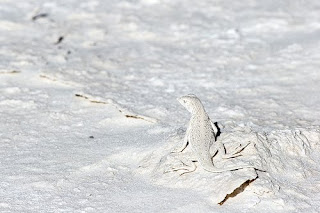Henry Louis Gates and "Extinct Paleo-Eskimo" are both predicted to have red hair!
Predicting homo pigmentation phenotype through genomic data: From neanderthal to James Watson
Caio C S Cerqueira, Vanessa R Paixão-Côrtes, Francis M B Zambra, Francisco M Salzano, Tábita Hünemeier, Maria-Cátira Bortolini
American Journal of Human Biology. Early ViewAbstract:
Background:Human pigmentation is regulated by several genes acting at different stages of melanin formation. Functional and association studies have elucidated the role of several of these genes in pigmentation phenotypes. Forensic and evolutionary studies can benefit from this knowledge.
Objectives:To evaluate the reliability of the prediction of pigmentation phenotypes using a large database of genetic markers in individuals with known phenotypes; and from this try to predict the pigmentation phenotype of prehistoric Homo specimens and of contemporary individuals whose visible phenotypes are not known.
Methods:We compared predicted and observed phenotypic data through an analysis of 124 single nucleotide polymorphisms in 33 genic and seven intergenic regions of 30 subjects, five of them prehistoric, whose complete nuclear genomes are available in UCSC and PSU UCSC public databases.
Results:For the molecular predicted versus observed phenotypes, the percentage of agreement was as follows: freckles: 91; skin: 64; hair: 44; eyes: 36; total: 59; while the molecular predicted versus probable (no visible observation available; inferences based on ethnic population characteristics) it was, respectively, 83, 60, 42, 67, and 63. The difference between two sets is statistically nonsignificant (P = 0.75).
Conclusion:To our knowledge, this is the first article to examine the effect of a large number of genetics markers for phenotype prediction. The approach could be useful for forensic applications, as well as for the determination of possible phenotypes of extinct prehistoric individuals.


